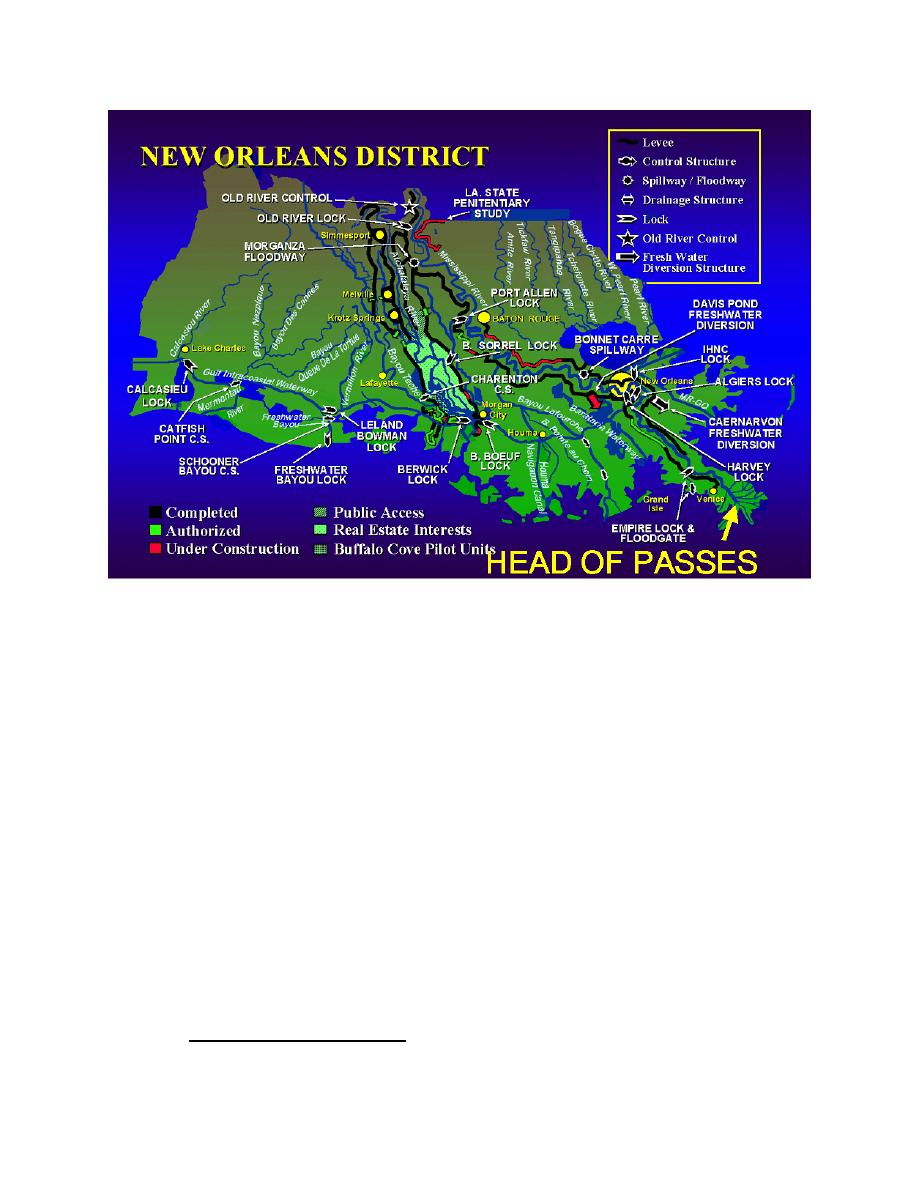 |
||
|
|
||
|
Page Title:
Figure 1. Head of Passes, Mississippi River, Louisiana |
||
| |||||||||||||||
|
|
 Figure 1. Head of Passes, Mississippi River, Louisiana
material beneficially in adjacent shallow open-water areas for marsh restoration,
but this is considered costly and has never been done before at the HOP. Further-
more, during the periods of rapid shoaling when as many as four hopper dredges
are needed to maintain authorized project depths, taking a hopper out of service
to use in pump-out for marsh restoration would/could compromise viability of
the navigation channel.
Dustpan dredges equipped with a flexible-discharge floating hose and suffi-
cient pumping capacity potentially have the mobility required for safe passage of
vessel traffic and can economically pump dredged material the distances required
for placement in a beneficial use scenario such as marsh construction. The use of
but effective operation under the vessel traffic and high current conditions typi-
cally found at the HOP in the spring had not been proven and was of concern. As
a result, the Corps' New Orleans District (the agency responsible for navigation
channel maintenance in this section of the Mississippi River) determined that an
operational research demonstration project was required in the HOP area along
Southwest Pass. The demonstration's objective was to verify the effectiveness of
a flexible-discharge dustpan dredge in safely conducting dredging operations
while placing the dredged material for the beneficial use of marsh creation.
1
U.S. Army Engineer District, New Orleans. (1998). "Assessment of coastwide Louisiana
maintenance dredging capabilities under the Federal Standard," New Orleans, LA.
2
Chapter 1
Introduction
|
|
Privacy Statement - Press Release - Copyright Information. - Contact Us - Support Integrated Publishing |